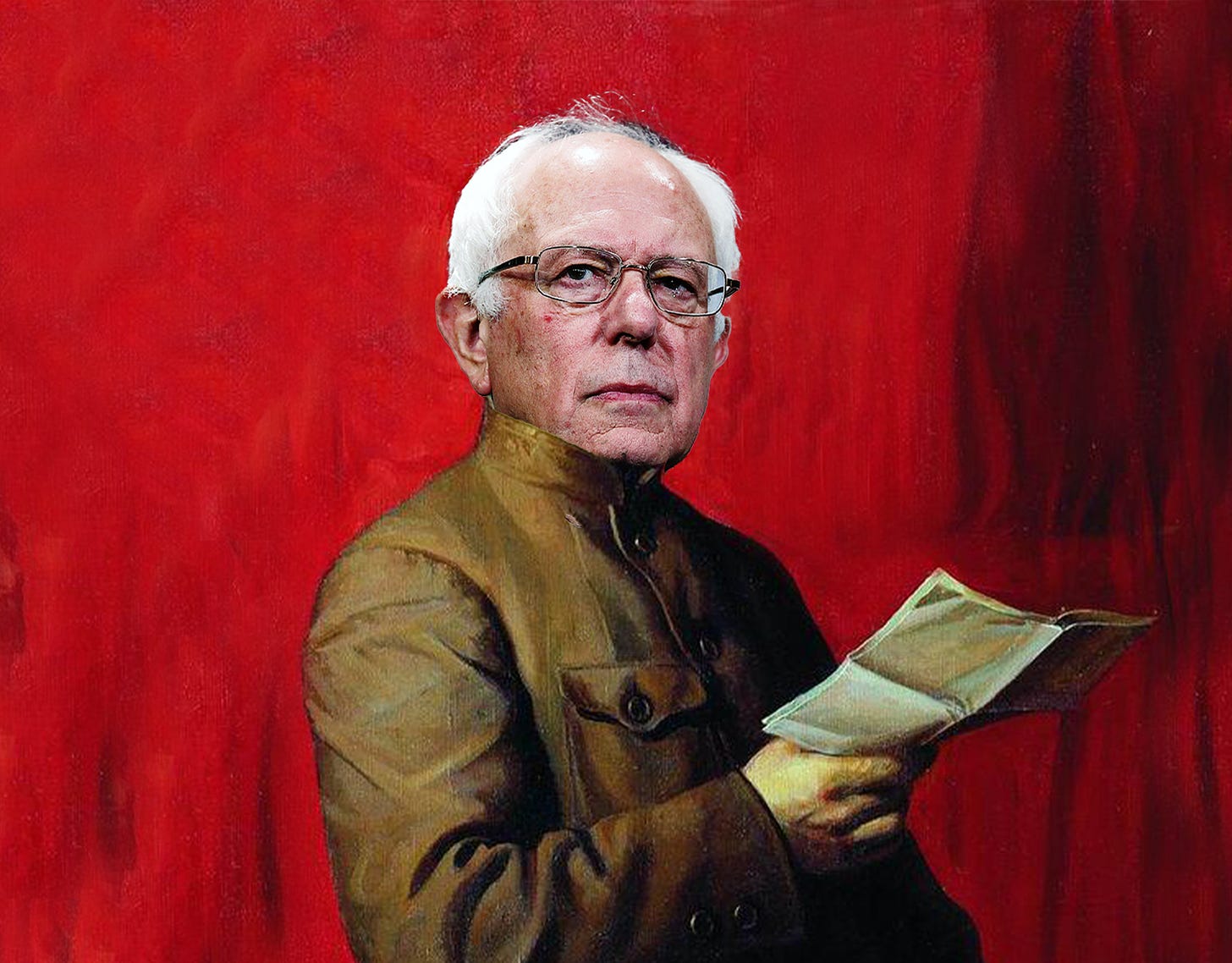Why Sanders Failed on Tuesday
The revolution that never came: democratic socialism is a protest, not a unifying campaign that can win nationally.

Something happened on the way to the revolution Bernie Sanders said would take him to victory in 2020. His people didn’t show up.
Last night, the Sanders revolution stalled in Michigan. In 2016, the state’s primary voters delivered him a colossal upset over Hillary Clinton: Sanders claimed 49.8 percent of the vote and earned 67 delegates to beat Clinton. But this year, he lost primary voters in the Wolverine State by double digits—earning 36.4 percent of the vote to Joe Biden’s 52.9 percent (as of this writing), and taking only 52 delegates.
And Michigan wasn’t the only state where Sanders lost ground. The same story played out in Idaho, where in 2016 he won with 78.0 percent of the vote but on Tuesday he only earned 42.5 percent. Ditto in Washington state, where Sanders won with 72.7 percent in 2016 and remains neck-in-neck with Biden around 32 percent at time of publication.
It’s not as if fewer people were going to the polls overall. In each of these states, overall turnout surpassed 2016 Democratic primary levels, yet Sanders’s vote share was down. That only means one thing: The ballyhooed coalition of young and non-traditional voters that Sanders said would turn out all across the country in unprecedented numbers to agitate for free college, Medicare for All, and the Green New Deal . . . didn’t.
His turnout model failed, which ought to force some introspection among progressives like Alexandria Ocasio-Cortez who will try to carry on the cause of democratic socialism. Because the “revolution” they champion was a revolution that never came at all.
As convoluted as the Democratic party’s system of caucuses, delegate thresholds, and super delegates is, Sanders’s main obstacle was never the political system he labels “corrupt.” It was the Democratic electorate.
The people who have been participating in the Democratic primaries this year are the same cohorts of college-educated, suburb-dwelling, and African-American voters who elected President Obama twice and delivered Democrats the House in 2018. (Oh, with some added Republicans, too.) Unfortunately for Sanders, those are precisely the voters he has struggled to win. If Sanders were to succeed, he wouldn’t have needed merely to outperform among a long-desired portion of the traditional Democratic turnout model; he would have needed to reinvent it completely. Sanders banked on the youth vote, but it either declined or fell flat.
Still, none of this explains why Sanders wasn’t able to stay close to his margins of victory in the states he won in the 2016 Democratic primary, like Michigan, Washington, Idaho. It’s not as if Sanders became a considerably weaker candidate in 2020 than he was in 2016—a remarkable statement in light of the heart attack he suffered during the campaign. This cycle, Sanders was taken far more seriously by the media, has committed organizers, held impressive rallies, raised an incredible amount of money, and outlasted more than a dozen other candidates.
Much of Sanders’s appeal and his limitations can be explained by the fact that his platform was entirely consistent. The Sanders (or Sanders-AOC) brand of socialism seems to work a lot more effectively as a protest movement than a winning governing philosophy. Perhaps it’s just a fact of modern American political life that there will always be a sustainable, bipartisan appetite for an anti-corporate, anti-war, revolutionary party outsider who wants to dismantle the big-money interests controlling Washington. The appetite just doesn’t happen to be enough to get majority political support on a national level.
Most likely, Sanders only appeared to be a better contender against Clinton in 2016 than Biden in 2020 because Clinton was so weak rather than because the Sanders coalition was strong. Otherwise, Tuesday night’s results would have looked very different.
Don’t forget that Joe’s Big Mo didn’t start until the field was cleared—that is, until voters had a binary choice between Biden and Sanders. Once voters had to choose between Sanders and Biden, Biden pulled away with the race.
If there’s anything that’s resoundingly clear about the election so far, it’s that the exit polls have consistently found that Democrats, and those NeverTrump Republicans who are participating in the Democratic primaries, want a candidate who will unify the party and beat President Trump. With this imperative, even some of Sanders’s former 2016 supporters aren’t willing to take a chance on him.
Although it was less than three weeks ago that a Sanders nomination seemed inevitable, voters quickly came to their senses. They ran straight away from both Trump and Sanders and into the polls to support Biden. That’s the 2020 revolution. It’s one that Sanders never saw coming.




